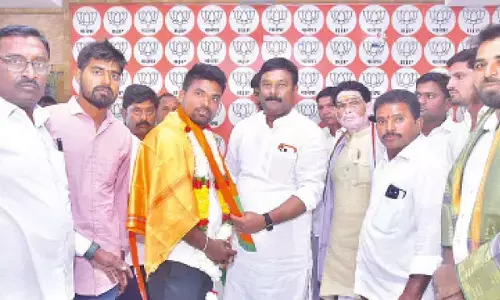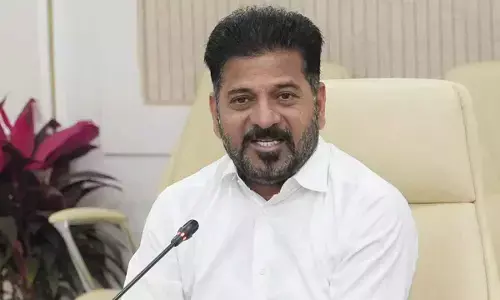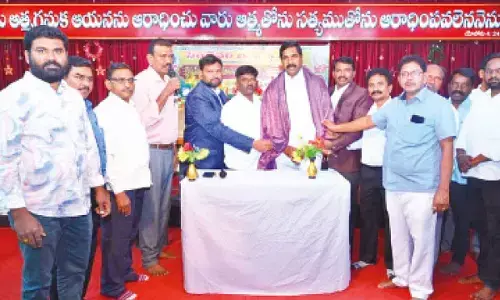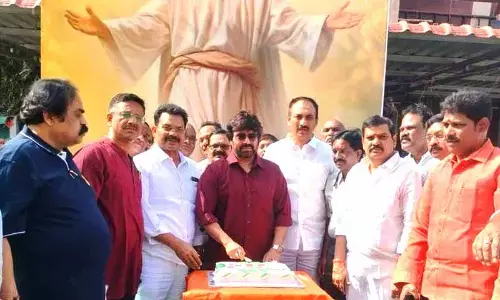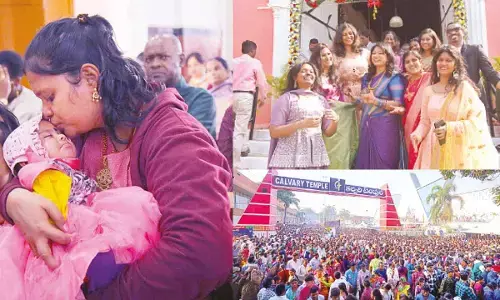How perceptions shape interpretations

The perception by society of the personality of a person is a value judgment and depends on the culture of a community, historical and geographical considerations and the ethical and moral superstructure that influences the conduct and behavior of the members of that society.
The perception by society of the personality of a person is a value judgment and depends on the culture of a community, historical and geographical considerations and the ethical and moral superstructure that influences the conduct and behavior of the members of that society.
We have seen, in earlier pieces that have appeared in this column, that ethical norms and moral principles can vary sharply over regions and time, and respond to cultural imperatives. Likewise, persons, in real life as well as in the mythologies of different civilizations, have been depicted, as villains or heroes, depending on similar considerations.
Very often, a historical, or even mythological, character is recognized as a villain in one version of an epic, while being characterized as a hero in another version, elsewhere, at a different time in history, or by different sections of people. There are many examples in the mythologies, and histories, of many countries.
Mahatma Gandhi, who is regarded as the Father of Indian Nation, and was responsible for the country's liberation from colonial oppression, through an unprecedented bloodless and peaceful movement, could not have been very popular in Britain at that time. Sheikh Mujibur Rahman, known as 'Bangla Bandhu', who led the erstwhile East Pakistan to freedom from Pakistan, and the birth of a new nation' Bangladesh,' would obviously have been an enemy in West Pakistan.
Then there was the example of Winston Churchill, who was widely admired in the USA and commanded a good deal of respect in his own country. However, his staunch opposition to the Indian struggle for freedom, and its leaders, is a bitter memory for Indians who also hold him responsible, perhaps not entirely fairly, for the great Bengal famine of 1943.
In Joan of Arc may have been a great heroine instance, but the English regarded her as a witch. Likewise Lenin and Mao Zedong, who were greatly adored by their own countrymen, were intensely disliked for their characters and their actions in the western world. Again, Kit Carson was a great explorer, and scout, for the American whites, while the Native Americans only knew him as a brutal oppressor. There have, however, been many great persons in history, with no one unhappy on account of their actions, such as mother Teresa. On the other hand, people like Osama bin Laden and Saddam Hussain are unlikely to have many people remembering them fondly!
Discoveries, inventions and preachings of great people which have altered the course of human history, and contributed substantially to the development and growth of civilizations have, many a time, also caused totally unintended tragedy and suffering. The atom bomb, for instance, was an indirect result of the discovery, by Einstein, of his celebrated E=MC2 equation.
But he could never have imagined that unfortunate consequence of his work. The centuries of strife, and conflict, between different sects of the same religion, such as Christianity or Islam, arising from the preaching of great prophets such as Jesus, or Muhammad, could also never have been the purpose for which those great Messiahs sent out their messages to humanity. Similarly, Das Kapital by Karl Marx has, at once, been the source of the profoundly humane labour theory of value and the concept of a classless and egalitarian social, economic and political society, as well as the oft quoted fountain of wisdom, by ruthless dictators, in the name ofcommunism.
Why, our own Constitution has frequently been used, by criminals and fraudsters, to escape the just consequences of their acts, and go scot-free, at least temporarily, in the name of human rights. Strangely enough, in history, as well as mythologies, heroes, as well as villains, were driven by the same force, ambition, though of different dimensions and quality. But for that force, there would have been no wheels, cities, no temples or sailing ships or aeroplanes, not to mention smartphones.
The heroes worked for the welfare of humanity at large, while the villains sought to satisfy their lust for power, and wealth. Take for instance, the case of Ravana in the Ramayana. No saint, or sage, could have matched his achievements in building a great city, constructing ships for commerce and trade and establishing a just, fair and egalitarian system of governance. He debunked the caste system, as described in the Vedas, and was a pioneer who was way ahead of his times.
He built a society whose people had pride swelling in their hearts, and who believed in nature worship and universal identity without any bias for caste, creed or gender. In fact 'Raksh Neeti', which he propagated, meant equality for all. He was an erudite, and learned, man who had mastered all the ten 'Vidyas,' or known forms of knowledge, each one represented by one of his heads. (According to one version of Ramayana) such was his mastery over Vedic wisdom, and knowledge, that Rama, his enemy, consulted him to suggest an auspicious time to construct the bridge being built to reach Lanka and fight against Ravana. Rama, goes that version, again sought Ravana's advice about the best time.
And when, in the dying hours of the battle, having tired of all other weaponry, Rama picked up the Brahmasthra, the modern equivalent of a nuclear weapon, Ravana, who also had the same weapon, desisted from using his weapon, that too such weapons, used at a time would cause near destruction of humanity and ecology of the planet.
He chose death as a noble alternative to causing destruction of the environment and suffering to people. Little wonder, then, that 'Ramavataram' in Tamil has Kamban, the author, imagining Ravana to be a very erudite scholar, king, musician and a good-looking man with good taste in clothing and jewellery, apart from being a much sought – after lover. Even for Periyar, the Tamil political leader in the 20 century, he was the ultimate Dravidian hero.
Ten Asian countries in 2002 joined in producing 'Realizing Rama,' which was performed at NCPA Mumbai. The conflict between good and evil, within oneself, and the resolution of that conflict, by the merger of the two, was beautifully depicted, as Rama and Ravana merge into one at the end.
Much controversy surrounds the personality of Duryodhan, the eldest of the Kaurava brothers, in the epic Mahabharat. He was no saint, but no despicable warmonger either. His sense of justice was exemplary, and there was much good, and magnanimity in his character. The way he stood up for Karna, the son of a charioteer, during the coming-of-age weapons exhibition was really commendable. After all, not many princes would have had the courage, to tell their elders, that the idea of barring someone from a competition, based on birth, was wrong.
In one of the novels of the inimitable PG Wodehouse, there is this actor who is bragging about his histrionic prowess, and the important roles assigned to him in plays, from time to time. When asked to name one important character he had portrayed, he replies, "oh! I sort of rush in and rush out in Scene 4 of Act 5!"
(The writer is former Chief Secretary, Government of Andhra Pradesh)
(The opinions expressed in this column are that of the writer. The facts and opinions expressed here do not reflect the views of The Hans India)


